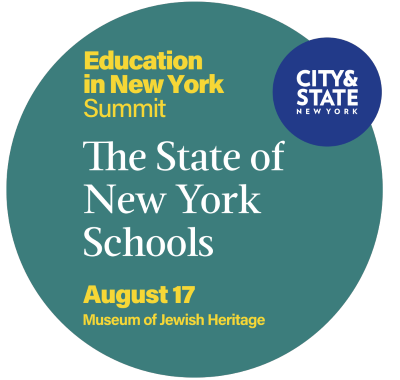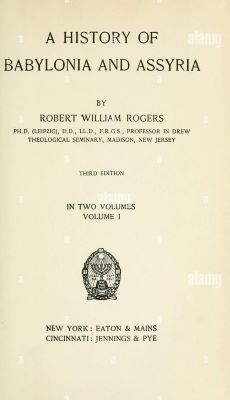
On July 13, 1824, the Marquis de Lafayette left France for the United States. He did so at the invitation of President James Monroe. Lafayette was the last living general from the American Revolution. His invitation came as veterans of the American Revolution were dying off just as we recently saw with veterans from the D-Day landing. He was invited to a country nearing the 50th anniversary of the Declaration of Independence just as we are nearing the 250th. And he arrived in the midst of a bitter presidential year in a country wracked by sectionalism just as 2024 is a presidential year in a deeply divided country.
Lafayette toured all 24 states then in the country. Streets would be named after him. So would villages, towns, cities, and parks. His portrait would be painted and statues would be erected in his honor. Think of the event at Lafayette Park with our last president and how we ignore the name of the park.
Any attempt to understand the Lafayette visit should be put in historical context. The trip did not occur in a vacuum.
THE MONROE DOCTRINE
The Monroe Doctrine was proclaimed on December 2, 1823. Typically, one does not link the Monroe Doctrine with Lafayette’s visit the following year. Lafayette was a leading figure in the cause of liberty everywhere. This included the Spanish colonies in the New World. He was a figure of some prominence in the ongoing strife in Europe between monarchical and authoritarian forces and those aware of the American model and experiment. This is not the place to document the constantly shifting developments in England, France, Prussia, and the Holy Roman Empire except to note that there was a constant churning between authoritarian and anti authoritarian forces. Depending on the prevailing winds Lafayette was a hero or villain to these governments.
What did this mean for the United States? There was a genuine concern that the authoritarian governments might seek to restore the former Spanish colonies to Spanish rule and perhaps even to seek to end the republican experiment in the United States. Just because those fears were not realized does not mean they were not legitimate. The official welcome to republican hero Lafayette and his tour of the United States delivered a message to the European authoritarian governments –HANDS OFF.
THE GREEK REVOLUTION
The Greek Revolution beginning in 1821, was an example of a European country seeking to become an independent state. At that time, the Ottoman Empire was in the role of Putin and England, France, and, yes, Russia, were in the role of the West today. While many Americans are familiar with the Founding Fathers looking back to the Greek city-state republics for guidance, the reverse is less well-known. The impact the American experiment as a republican government had on the Greek people seeking their own independence.
How should America respond to this Greek desire to overthrow Ottoman rule and become an independent country? There were two city on a hill options. One was the United States was to be an example for countries around the world. The second was for the United States to become actively involved in helping the Greeks achieve the independence they sought. To some extent, one may say the considerations are debated in whether or not to support Ukraine in its quest for independence and desire to join the West.
We know, of course, that the United States did not join the battle. But once again, the invitation to Lafayette, the world champion in the cause of liberty, signaled a message.
These two examples demonstrate that Lafayette’s visit to the United States should not be understood in isolation from ongoing developments in Europe. It also signals that what happened here was a matter of concern for what happened over there long before the Great War, World War I, saw the presence of American troops in Europe.
PASSING THE TORCH
We take for granted the 50th anniversary and the 250th anniversary. We take the former for granted because we know that it already has occurred. However, to people living 200 years ago, there was great trepidation about the pending event. Would the “experiment” called the United States survive intact? Would the values of the hallowed Founding Fathers be sustained by a new generation?
As we approach the 250th anniversary of the birth of the country, perhaps we are in a better position to recognize the anxiety felt in 1824. The United States had changed significantly since the American Revolution had ended. Huge numbers of people were beginning to settle in what would have been wilderness areas only a few decades earlier. When Lafayette was is in Utica, he was stunned and dismayed to see how the Oneida had been treated. During the American Revolution, there developed a closed bond between Lafayette and the Oneida from Valley Forge to the Mohawk Valley. Now they were not even part of his welcoming committee. He had to make a specific request to see them and then spent time alone with them. This was a time of looking back, of James Fenimore Cooper and Washington Irving and soon the paintings of Thomas Cole. What had happened to the America of virtue? Was the world of the Founding Fathers soon to pass from scene with a country no longer linked to its origins?
The political world was in disarray. What we call the First Party system had collapsed. This system of Federalists and Anti-Federalists/Republicans included such stalwarts as John Adams, the killed Alexander Hamilton, Thomas Jefferson, and James Madison. The Second Party system of Andrew Jackson Democrats and the Whigs of Daniel Webster, Henry Clay and, later, Abraham Lincoln, was just in the process of being formed In 1824, all was chaos with rampant “sectionalism” as it was called then leading to a disputed election. We know that the country survived then to celebrate the 50th anniversary and that it would be decades before the country divided into the Union and the Confederacy. No one knew that in 1824.
Lafayette was invited as a unifying figure. He was living proof that the American Revolution lived. His longtime advocacy for liberty made him an excellent choice for returning to the United States. His thirteen month visit began on August 15, 1824 with his first stop in Staten Island, which was not part of Manhattan/New York City then. The next day he sailed across to what is now lower Manhattan where he was greeted by a huge crowd of thousands if not tens of thousands for a parade up Broadway in what later would become the Canyon of Heroes, until he arrived at City Hall.
Everywhere he went the story was the same. Huge crowds with music, muskets, and sometimes cannon fire welcomed him. Veterans poured forth to see this living reminder of the glorious days of the American Revolution. They would yell out to him “Do you remember…” and name a battle from the war.
As it turns out Lafayette was a man of three times. First as the youngster who came of his own free will and with his own money to fight and be wounded for the American War for Independence. Second, in 1824-1825, in his triumphal tour showing that the spirit of the American Revolution still lived. And now in 2024-2025, where the United States once again stands on the precipice to determine if we will continue to be governed by the Constitution and be the City on Hill as an example and leader in the cause of liberty and freedom.










